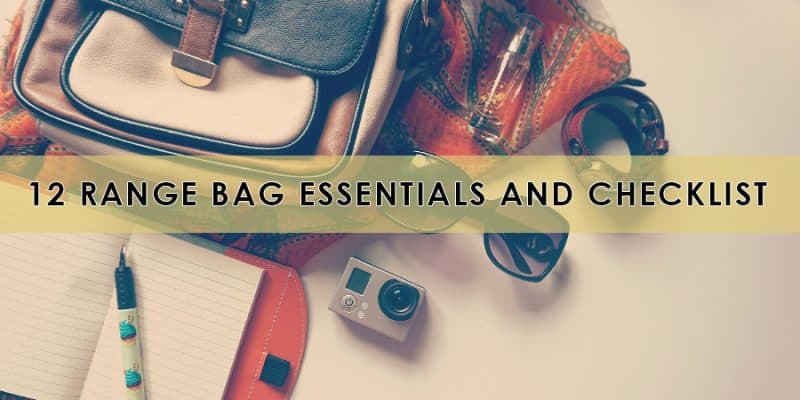Range Bag Essentials and Checklist: How to Pack Before Trip and Make Your Day?
After doing a lot of research you have finally decided to purchase that range bag. As any shooter will tell you, the type of bag you carry makes a huge difference when it comes to comfort and convenience when you’re in the range or hunting.
A range bag is only as good as the stuff you put in there though. Sure you’ve got your gun and ammo, but what else do you need? If you want to get the most out of your shooting in the range – and your time – make sure you’ve got the right stuff in range bag for this reason you have better ideas about range bag essentials.
What to Pack in Your Carry-On Range Bag?
The following is a list of items and accessories you may want to bring to the range. Depending on the size of your bag you may or may not be able to fit all these in. If there isn’t enough space just make a list of the essential items and leave the rest in another bag.
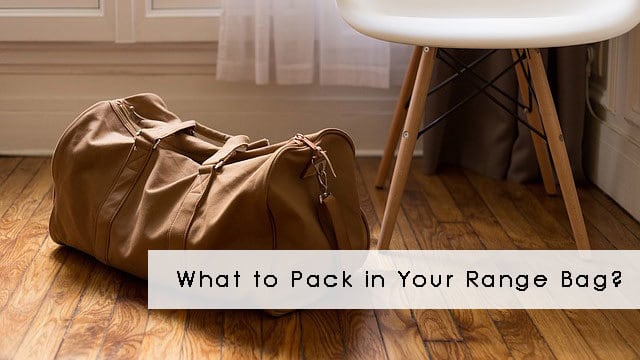
There are no specific product recommendations here, but by listing the items at least you’ll know what to look for the next time you’re shopping for gun accessories and essentials online.
Range Bag Essentials: List of Gears I Should Have in My Range Bag!
Eye Protection
Sunglasses are not enough to protect your eyes when in the shooting range. You need to wear wraparound safety goggles that have been designed for guns.
There probably isn’t a legit shooting range in the US that will let you shoot without safety goggles. These ranges rent or sell safety glasses but it’s better – and cheaper – to buy your own.
When shopping for safety glasses, look for a pair that meets minimum safety standards. The glasses must not impede your vision either. Your eye protection must also be comfortable so you can focus on the target.
Ear Protection
Ear protection comes in several forms such as foam ear pads, passive earplugs, in earplugs, over the head ear protection and electronic ear protection.
Some earplugs are simple and others are fancy, but they all have the same goal, reduce or completely cancel the loud noise.
Always bring at least a couple of ear protection devices in case the pair you’re using malfunctions. There is no shortage of earplugs online so you just need to find a pair you’re comfortable with. Some of the better ear protection devices reduce loud noise and accentuate quiet sounds.
For Safety, a firearm should be stored. No matter how careful you are, it’s essential that you have a holster or handgun case. Make certain your gun case is durable, has a good locking mechanism, and fits your gun.
For extra protection, it’s a good idea to buy a gun safe for your home so only those with authorization can access it.
A portable gun safe is also something you may want to consider. These safes have unique security features such as fingerprints so only you can open it.
As for a gun safe or gun vault, make sure that it’s got the capacity to match your collection.
If you can lock the pistol compartment pocket in range bag, there’s no need to buy a case. But if there’s no lock or you’re looking for additional protection then you’ll need a case just to be sure.
A Few more Gun Safety Lock, Rules, and Laws Tips:
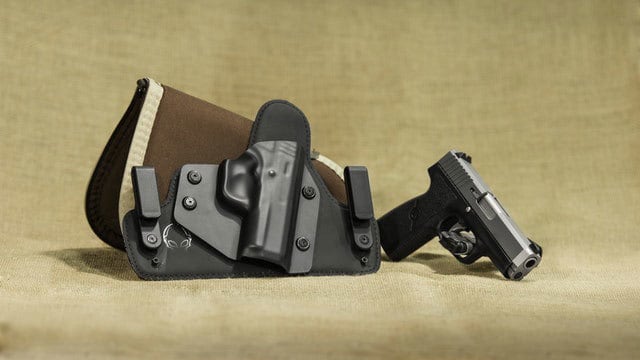
- Always handle your gun like it’s loaded
- Always dry fire with dummy rounds
- Do not load your gun until you’re ready to use it
- Point the gun at the target, squeeze and try not to flinch
- Read the shooting range safety guidelines before you fire a few rounds
Safety Ammunition
Knowing how to safely store your gun is only half of it. You must also store ammo properly to avoid accidents and prolong its life. Some tips to keep in mind:
- Follow any storage instructions indicated in the package
- Do not use on guns they’re not designed for
- Keep all your ammo in a clearly marked storage box
- Keep your live rounds, dummy rounds and practice rounds separately
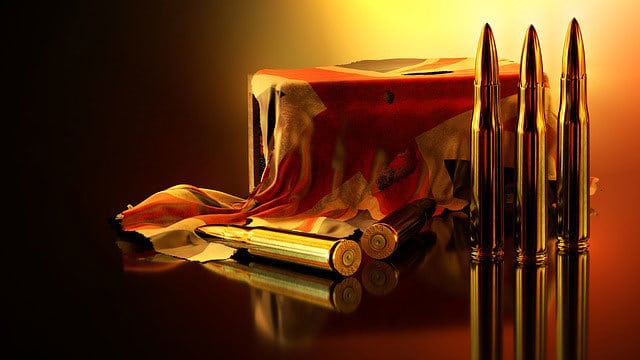
Humidity control is also important for ammo. Avoid excess moisture because it interacts with primer and brass casings, causing corrosion.
Ensure you store ammo in a place where humidity is low. If you can store your ammo in an airtight container that’s even better.
If you’re going to store ammunition in ammo can make certain there is no moisture in the can before you close it. If you’re going to store ammo for the long term, consider using desiccant packets and a dehumidifier so the ammo is in good condition.
Label your ammo so you’ll be able to use the oldest ones first and if you’re a new shooter there’s no need to buy a ton of ammo anyway as you’ll want to focus on your aim.
Safety Protection Kit
Earlier I mentioned the importance of having ear and eye protection. You can purchase these separately, but you can also buy an all in one safety protection kit or bundle.
These products come in different variants, but the set should include at least a pair of eye/ear protection. Some kits come with multiple pairs but they will cost a bit more.
Gun safety protection kits vary in quality, which is why some prefer to buy ear and eye protection pieces separately.
If you do opt to buy a bundle, look for a quality brand so you will know what you’re getting. A good warranty and customer support are also essential.
As for the specific features, make certain the ear muffs are adjustable and have a decent noise reduction capability. Noise reduction is measured in dB, with a 25 dB considered pretty good.
For the safety glasses they must be made of durable materials, and the lenses must provide protection without affecting your visibility.
The degree of visibility you get will depend on the design though, hence the need for a quality brand. No matter what you choose, make sure to test them before going to the range.
Basic First Aid Kit
Is having a first aid kit in the shooting range overkill? No, in fact, you should always have one if not in range bag at least in your car.
One more thing: this might be stating the obvious but you should learn how to use the kit before you go into the range.
First Aid Kit Contents Checklist for Personal Outdoor Survival
At first, you have question, what should be in a first aid bag? The answer is you can buy it easily but it might not have the items you need, or it may contain stuff you don’t. If you’re putting the kit together on your own, here is a checklist,
- Tourniquet
- Antibiotics
- Band-aids
- Lip balm
- Blood clotting pad
- Antiseptic wipes
- Antibacterial ointment
- Blister ointment
- First aid manual
- Wound coverings
- Splints and wraps
- Medication
The medication you should bring depends on your particular needs. Most of it comes with medical adhesive tape and nonstick sterile pads. You may also bring some safety pins as well.
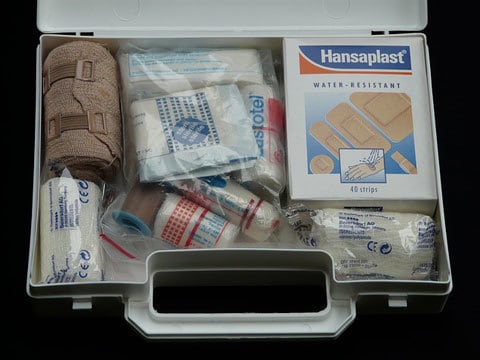
Bring insect relief treatment if you’re at an outdoor range. You’ll also want to bring antihistamine in case your allergies get triggered.
Just to be on the safe side you should also carry thermostatic gauze to stop any bleeding.
Gloves
Will any kind of gloves do? In theory, you can wear any but it’s better if you get a pair of gloves that are designed for gun use.
These gloves are different from the rest because they’re more flexible and have better articulation.
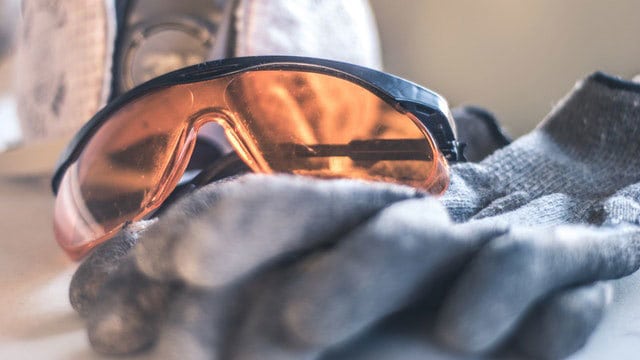
If you’re buying for shooters’ gloves look up the material first. The best ones are made of leather – even if it’s just the palm and finger parts – and are breathable.
Quality stitching is a must as the material will be subjected to lots of pressure. If you’ve been using gloves for a long time you can tell a quality pair from a poor one.
To get used to give yourself time, to wear gloves especially if you’ve never used them before. The feel of the trigger is different when you’re wearing gloves. Some prefer open gloves while others like them closed. It’s really up to you.
There are different types of shooters’ gloves, some for pistols and others for long firearms. Pistol gloves don’t need a lot of padding and you don’t want them too thick as it’ll make shooting difficult. Your pistol gloves should also make it easy to control the gun, period.
Brass Catcher
A brass catcher is used to catch cartridge casings as they’re released from your gun. You can choose from various designs like boxes, nets, pouches or bags. You can opt for a universal brass catcher or one that’s designed specifically for your gun.
Brass catchers are set on a gun’s side or directly connected to it. If you’ve got several firearms, get a brass catcher that you can mount on a Picatinny or flat top. The better brass catchers work with LR-308/AR models and also work with reloaded.
You may also prefer a brass catcher with several detect locking spots to accommodate different types of guns. An effective brass catcher is easy to adjust and mounts quickly on all popular firearms. You’ll find this very useful if you shoot a lot of rounds and don’t want any to land on you.
If you’re looking for versatility then it’s best to go with a brass catcher that allows for multiple configurations. Finally, you should look for brass catchers that are easy to install.
Spotting Scope
A spotting scope is often used for bird watching, surveillance and hunting. This also makes it a potent tool for verifying your shots from 25 yards or further out.
Whether you’re at an indoor or outdoor shooting range you’ll find this handy for keeping track of your target. Lots of spotting scopes are available so you do not go to lack for choices.
Just like other scopes, you’ll want to focus on magnification – 20x to 60x is the usual range – and the objective lens diameter. The objective lens diameter determines the resolution and light gathering capability of the scope.
If you have never used a spotting scope before, get one that’s built for heavy-duty use. Waterproofing is essential if you go to outdoor ranges as there’s no telling when it might rain.
You really shouldn’t be shooting rounds in the rain but in case there’s a sudden downpour your spotting scope will hold up. Make it a point to check the other product specs.
Aside from the magnification, you’ll also want to assess the field of view (FOV), eye relief, fog proofing and lens coating. These specs become even more important if you’ll use the scope for hunting.
List of Cleaning Tools Equipment Supplies and Materials
Water/Snacks
No lengthy explanation needed here. If you’re going to be in the range for several hours, better bring a bottle of water and some snacks.
You can bring chips or any kind of food you like, just make sure not to leave crumbs all over the place. Energy bars are popular among shooters as they’re healthy, delicious and easy to carry around.
Chamber Flags
Chamber flags are usually required at organized events and some shooting competitions and these devices are used to indicate the status of your gun.
You may use a chamber flag, for instance, to let others know your gun isn’t ready to use or that it is not ready to be discharged. Not all ranges require chamber flags but others do so check the rules.
Gun Mat or Towel
You’ll need a towel at the very least to clean your gun but you’re probably better off with a real gun cleaning mat.
These are waterproof and made from thick materials to protect your gun and the surface you’re cleaning it on. Many of these cleaning mats are waterproof, oil resistant, and resistant to fading.
Flashlight and Batteries
It might seem overkill to bring a flashlight and batteries in your range bag. If you only spend a couple of hours in the range during the day, there’s no need for these. But what if it’s night? Or what if you’re joining a shooting competition that spans several days?
In those cases, it’s better to have a flashlight. Compact flashlights are available so they’re not going to occupy large space and if you’ve got a smartphone or tablet it’s probably got a flashlight built-in or you can download a flashlight app free.
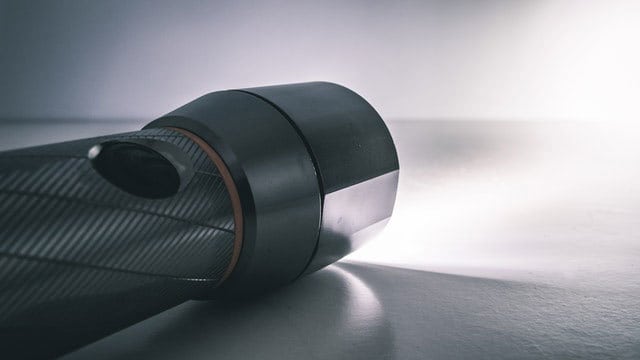
Squib Rod
A squib load means there’s not enough power to fire the bullet out of your gun’s barrel. The squib can be stuck anywhere from muzzle end to the chamber.
Firing another round can damage the gun or cause an accident. The safest way to dislodge this bullet is to use a squid rod so you should have one.
Disposable Wipes
Disposable wipes may be part of your cleaning kit or you can buy it separately. Either way, you should have a few of these at your disposal.
Mini Cleaning Kit
A mini cleaning kit is like a first aid kit, it comes in different types and you can buy an all-in-one or buy each component separately. The items to look for depend on the guns you own, but a few considerations here.
- Versatile cleaning kits can handle shotguns, pistols and rifles of varying calibers
- Some bronze bore finishes are firearm specific
- A microfiber lens cloth is necessary
- A cleaning rod is a must
- Adapter for threading mops, jigs and brushes
- Solvent, lubricant, patches towels are needed
- A compact cleaning kit is preferable if you do totally on-field cleaning
Cleaning kits for pistols and shotguns differ. Those for long firearms have more pieces so choose the appropriate cleaning kit.
Pain Reliever
If you don’t have a pain reliever in the first aid box, you should. You’ll never know when a headache or other body aches will show up so it’s best to be prepared.
Hand Sanitizer and/or Lead Off Wipes
You won’t just handle your gun and ammo, but also gun oil, solvent, and other stuff. Keep your hands clean with a hand sanitizer and wipes.

Sanitize your hands after cleaning your gun, careful to remove any oil or liquid that got on to you.
Pocket Knife
A pocket knife has many uses so don’t go to the range without one. From cutting the tape to emergency situations, it’s best to have one of these in-range bags.
Magazine Loader
Also known as speed loaders, mag loaders are devices used to simplify magazine loading.
Numerous designs are available but the simplest depress the uppermost round so you can insert the next round without difficulty. Depending on the design the loader might put emphasis on loading ease than speed loading.
Some magazine loaders are universal, i..e. compatible with all firearms. Others are meant to be used with a specific type like the Ruger 10/22.
Dry Socks and Other Clothing
Dry socks and extra clothing are necessary if you’re in a shooting competition or it’s outdoors and the condition is damp.
Rain Gear
It’s never a good idea to shoot outdoors if it’s raining. But even a bright, sunny day can turn overcast in seconds.
If there’s even the slightest chance of rain, bring rain gear. This is another reason why it makes sense to get a water-resistant or waterproof range bag.
Multi-Tool and Screwdriver Sets Item and Other Essentials for Shooting Range
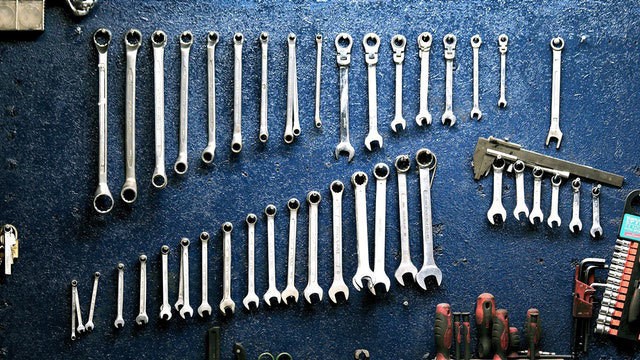
Even the best-kept gun can break down anytime so it’s best to have a toolkit ready. You don’t need to bring your entire toolbox, only the most essential ones.
- Screwdriver: different screwdriver heads and sizes
- Multi-tool: an all-purpose tool will come in handy in case you need to tweak your gun, spotting scope, or any of the accessories.
- Sharpening stone
- Knife
- Duct tape
- Measuring tape
- Electronic caliper
- Staple gun
- Marker
- Notebook or app for taking notes
A hammer and some nails may come in handy if you’re shooting for an extended period. If you’re bringing a notebook make sure it’s all weather.
Staple Gun
A staple gun will prove useful if you’re at an outdoor shooting range as it’ll keep your targets and other paperwork in order.
Pen/Marker
Shooters use a marker to designate distances, targets, measurements, and spots they’ve hit or want to target.
Recording Data
A data recorder does exactly that, record data so you can keep track of your progress. There are many ways to do this and the easiest is to keep track of your shooting accuracy.
Monitor your target accuracy as well as timing and speed. Take note also of the gun you use, ammo, distance, etc. A notebook or a note-taking app makes tracking easier. The range can also supply you with data.
Targets
No need to pay for the range’s targets when you can have your own. If you’re computer graphics savvy you can create several in an illustration program and print them out. Paper targets are also widely available so finding one won’t be a problem.
If paper targets are insufficient or you want to try something different, check out targets that emit dust or smoke so you’ll know if you hit or missed the mark. Others prefer silhouettes while others like bull eyes, eventually you’ll find a favorite.
Carry Case
Is it necessary to use a carry case if you’ve got a range bag pistol pocket? It depends. If you’re not going to put anything else in the pistol pocket then it’s probably not.
But a carry case may be ideal if you’re going to put other items in it that could scratch your gun.
Allen Wrenches and Torque Wrench
If these aren’t yet included in your toolkit, they should be.
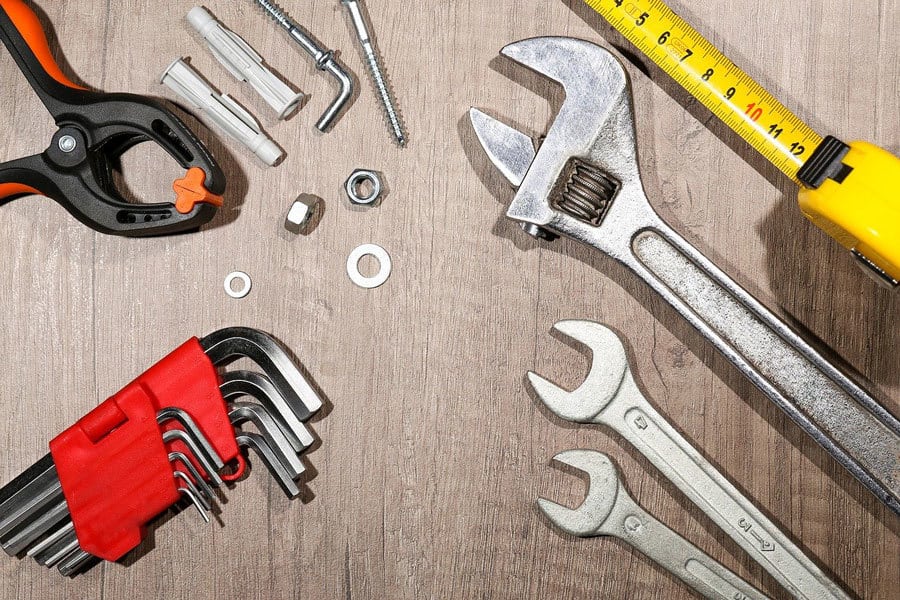
Masking Tape
Use tape to conceal bullet holes. You can also place tape on your shooting glasses to cover your weak eye.
Special Items Suggested When Using Outdoor Ranges: Another Range Bag Essentials and Checklists
Hat or Cap
Bring one in case the sun’s glare gets in your eyes. Make sure you’re comfortable in the cap in case you need to wear it for a long time.
Bug Spray and/or Suntan Lotion
You’ll need this when an outdoor range especially if you’ve got sensitive skin. Apply as much lotion as needed to cover any exposed skin. Consider getting sunscreen as well to give yourself some UV protection.
Lip Balm
Use lip balm to keep your lips from cracking when you’re under the sun. It’s actually a good idea to have this in your bag regardless of where you’re going.
Appropriate Weather Clothing and Shoes
Casual is the norm at shooting ranges so feel free to dress in whatever makes you comfortable. For outdoor shooting wear something loose and fresh so even if it gets hot you’ll still be comfortable.
Shooting Journal
Keep tabs on your performance and how you’re improving day by day. A note-taking app is more practical than a physical notebook as it won’t take up as much space in your range bag.
Prepared Skills & Drills
You’ll save yourself extremely by having prepared skills and drills.
Snap Caps or Dummy Rounds
Both of these are necessary when checking the status of your gun. Every now and then you’ll need to dry fire your gun and do some maintenance checkups so dummy rounds will be useful.
Timer
Use a timer to determine how quickly you’re able to hit your targets. Timers are particularly good if you’re preparing for a shooting competition.
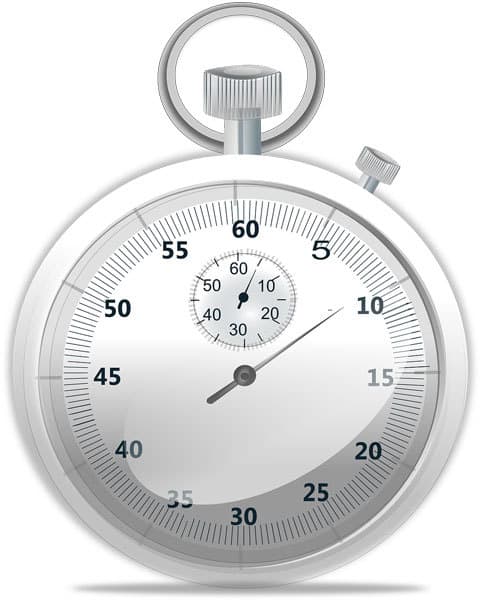
Binoculars
Binoculars are handy for gauging your shot. However they serve the same purpose as a spotting scope, only spotting scopes are more effective.
Range Day Checklist: Ultimate Guide
It is easier to make the most of the time you have available if you have a plan and pack the necessities and a few extras in your bag. Strong organizational effort is required for effective planning to take place. However, if you are anything like us, you may discover that your range bag quickly becomes disorganized and cluttered with unnecessary items. At the beginning of each new season, you should empty your bag. Everything should be taken out, and then, in an ordered fashion, just the required things should be put back in.
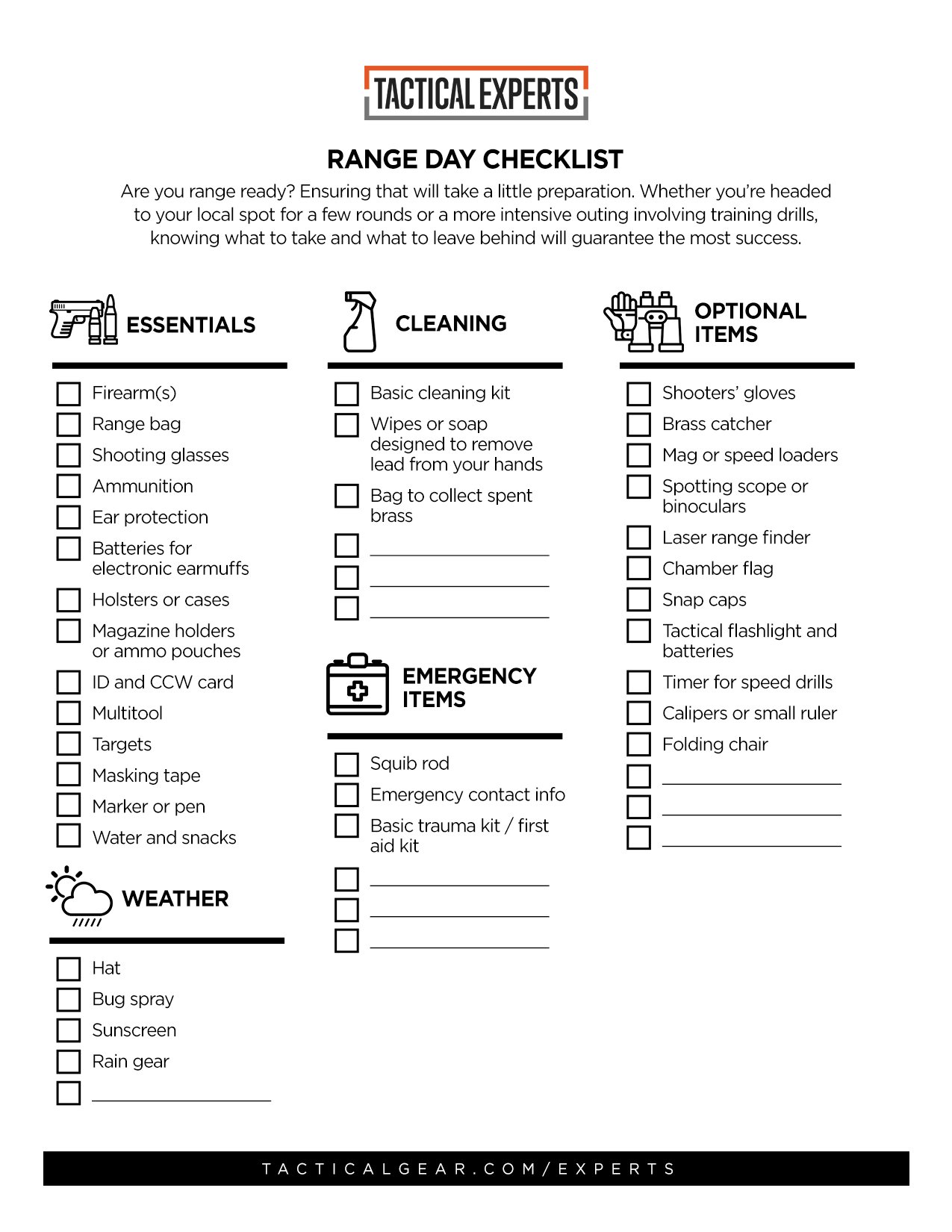
Girls Range Trip checklist Just in Case
Nail File or Clippers
A nail file is handy in certain situations to keep your fingernails clean, but they can do more. You can also use that file to remove a stuck cartridge casing from a chamber for instance.
Personal Hygiene Items
Wipes, toiletries, toothbrushes and comb are some of the essentials. You may add or remove hygiene items depending on your needs or how long you’re going to shoot in the range.
Hairbrush and Makeup
Girls have their own preferences when it comes to the ideal makeup kit. At the very least you should bring lip gloss and face powder so you can freshen up. You’ll also want to bring a hairbrush to keep your hair looking good.
Other Items to Consider
Some of the following items may or may not be essential to your shooting or hunting needs. If you think you need these but don’t have space in range bag, just put the items in another container or bag where you can them.
Make a list of the things you need and organize them.
- Cooler
- Target stand
- Folding chair
- Handkerchief to wipe sweat
Long Range Pistol and Gun Shooting Tips, Tricks and Techniques
Special Look
- Never lose awareness of your surroundings whether it’s an indoor or outdoor range
- A gun’s safety feature only goes so far as you’re still responsible for how it’s used
- If your gun won’t fire when you pull the trigger, slowly point the barrel in a safe direction and unload the pistol
- Make sure the barrel doesn’t have anything blocking it before shooting or loading
- Only use the correct ammo
- Focus only on your target and don’t hit anything beyond it
- Do not point your firearm at anything you don’t intend to shoot
- Don’t place your finger on the trigger unless you’re going to pull it
Ideas about Locations
Location is not really an issue in shooting ranges. Indoors or outdoors you’re assured it legal. However, you need to be careful. Some factors to keep in mind:
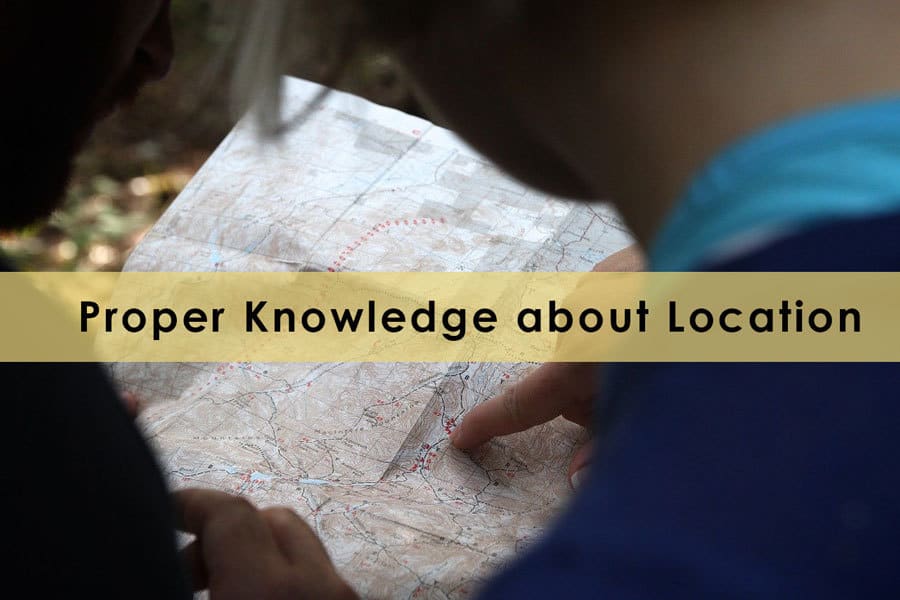
- Firing guns in city limits are only permissible if you’re in an indoor or outdoor range or in self-defense.
- If you’re beyond city limits and have wooded property and have obtained permission to shoot, you’re good to go.
- National parks usually don’t let you shoot guns though you’re legally allowed to bring one.
- State lands have varying laws so check the regulations first. National forests also have varying policies.
Authority Clearance
Gun laws vary from state to state so you’ll need to check the laws in your state. The simplest way is to go to a gun store.
There large stores around the US and also mom and pop stores where you can make a purchase.
Requirements vary per state, but the following are often needed:
- Proof you’re over 18 or 21 (valid ID)
- Your court record will be checked
- Proof of residency
- You can ask for a Personal Firearms Eligibility Check if you’re unsure of the requirements
- Most states require you to get a hunting certificate for long firearm purchases
Personal Emergency Information
Collect all the essential information and put them in one file. You can either write these down, put in a folder and store in your range bag or you can jot these in a Google Docs so your loved ones can access them anytime.
Include your contact information (phone numbers, email, office work number, relatives and friends to call). Don’t forget to bring your IDs.
It’s also a good idea to make copies of all your gun-related documents. If you’re hunting, always carry your hunting license and other important paperwork.
Conclusion
Having a range bag solves a lot of the problems that shooters face when it comes to bringing the essential gear with all the pockets, dividers and compartments you can store a lot of items so you won’t be forced to buy or rent from the range.
As I pointed at the beginning of the guide, the problem most shooters end up facing is figuring out what items to put in.
Hopefully, this range bag essentials and checklist guide was able to help you determine which ones are needed and which aren’t. New to shooting or not, having the right set of gear makes all the difference in the world.

